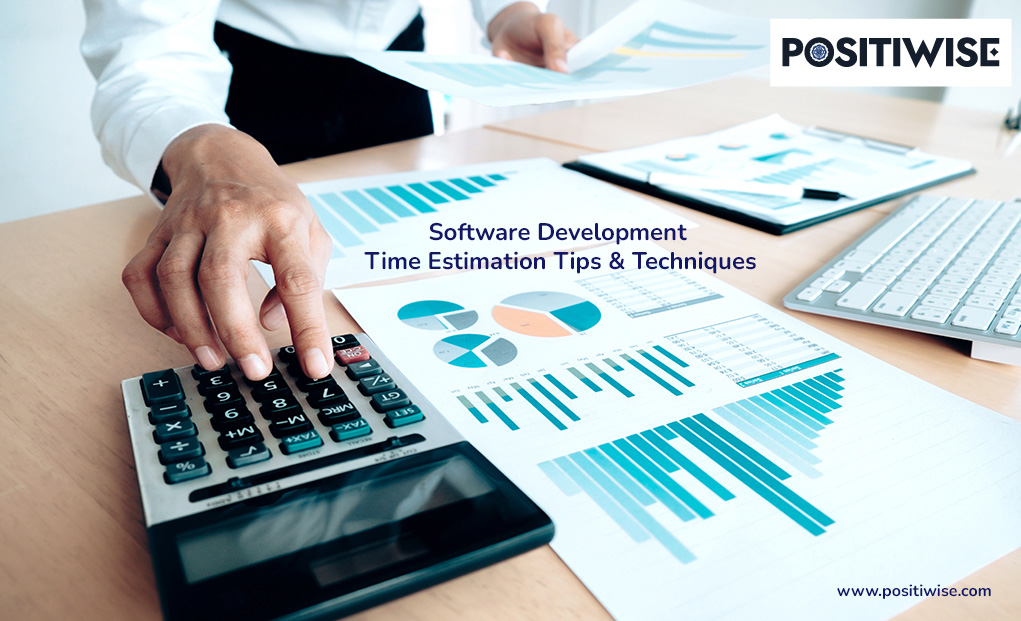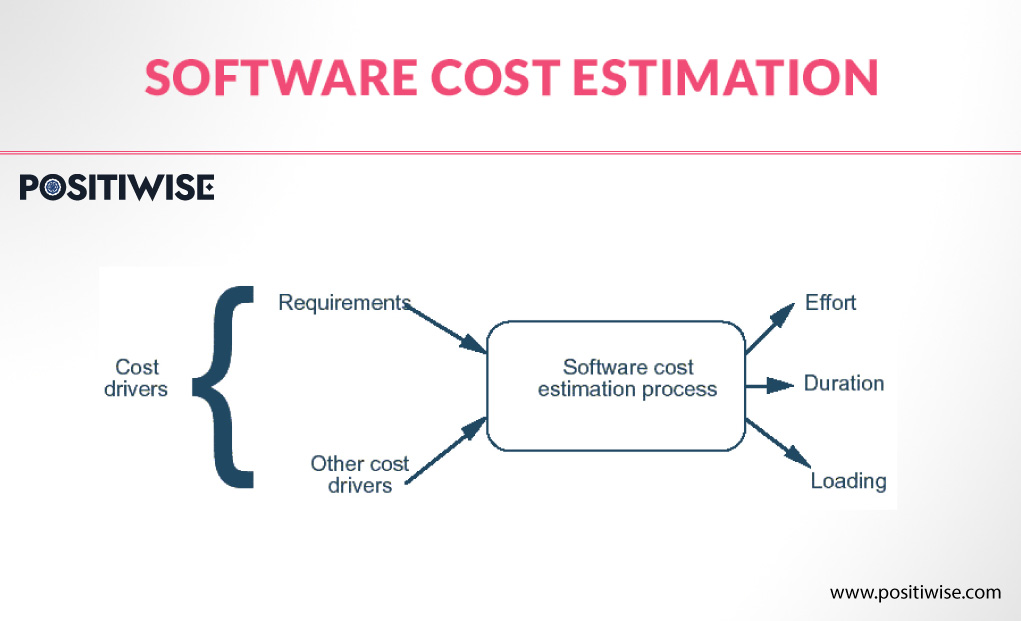Quick Overview:
Every client desires to have financial and software development time estimation early on. So the client can decide the financial implications and time frame of completing an intended project. Likewise, how small or simple the software time estimation project could be is one of the critical aspects.
Software project estimation often exceeds time estimation, resulting in an enlarged budget, missed market opportunities, and penalties due to Service Level Agreements. However, such outcomes are avoidable, but project managers should have a structured approach toward software time estimation to avoid it.
Nonetheless, here we share some techniques that help manage how to estimate software development time better so you give your clients the correct software development life cycle time estimation.
Tips & Techniques for Estimate Hours for a Software Project
Below are some software development time estimation techniques that will help you accurately estimate man-hours for a software project.
Clearly Define the Complexity of Your Project
Take your software project’s complexity seriously and understand the level of risk involved with that software development, as it can heavily affect the duration. Likewise, it’s recommended that you divide projects into three parts, namely:
Already Known
Developing software with specific predictable requirements, such as a primary customer portal for a small company. Henceforth, the software development estimation will be predictable and accurate, while the involved risk will be the lowest.
What Can Be Known
A software project with its core is predictable but has specific requirements in addition. For example, developing a customer portal and integrating ERP. Therefore, small risks are probable at the time of integration.
Complex
Suppose there’s a software development project involving specific technology or innovation and uncertainty in business requirements, such as developing software on Agile techniques. In that case, such software projects have higher risks. Likewise, there can’t be an exact time estimation as well.
Therefore, figuring out the complexity of the software project helps the company tremendously as you can defend how much time should be dedicated to the project and how much risk will be involved.
Giving General Estimation
Before you make a detailed software project estimation, your customer may want to know a rough estimation, to form an expectation. Henceforth, once you identify software complexity, it’s recommended that you make a rough estimation based on your earlier software development experience and make your client aware of it. For example, you can give an approximate idea that it’ll take around six months for two developer teams with five people to complete the project.
Estimate Work Scope
For detailed software project estimation, it’s recommended that you build the scope of work that shows the exact requirements of the software and then evaluate each requirement. In addition, ensure what Software Development Methodologies you’re using in your project.
Traditional Practices
Traditional practices involve underlying requirements that don’t change so quickly. Henceforth, it’s recommended that you break down the requirements into small and easy-to-estimate tasks. For instance, use Work Breakdown Structure, a tree structure that shows you the phase of software development related to each task.
Once you complete all the processes, you can start the time estimation of each task using the two below-mentioned methods:
Wideband Delphi
The Wideband Delphi is an estimation method that uses consensus-based techniques for estimating tasks. Likewise, it compares results and raises or negotiates each task-related concern.
Analogy
It’s a data-driven estimation based on similar activities to your previous projects. So, for instance, if you go through the estimation and real-time spent on earlier projects doesn’t coincide, you’ll be able to know which activities are riskier according to the timeline. Henceforth, you can give more time and management effort to that task.
Note: The precise time needed for the development is enough for smaller projects. And, for more significant Waterfall projects, it’s recommended to go minimum to the maximum time needed for each task—for example, WBS (Work Breakdown Structure). So you’ll be able to make sure issues don’t alter your project development flow.
Agile Methods
In this method, the scope of the work changes once any change occurs in the requirement. Likewise, the workload is based on the value of end-users. It means the more value a feature it provides, the sooner it’ll be developed. Likewise, the planned tasks are shown in the backlog according to priority.
Furthermore, it’s recommended that it’s better to estimate efforts instead of time when it comes to Agile projects. And you can also point out the effort consumption of units for the user. In addition, it’s recommended:
- You start with the complexity estimation of a sample. For example, you are logging through a web page. And give critical points to your team. So, everyone can use that as a reference for estimating the task.
- It would be best if you went through the backlog so project team members could estimate the complexity of every task. So you can discuss this with the team accordingly.
Adding Risk Buffer
You should add an overall risk buffer between 5 to 25% of the overall project depending on the complexity of the project and common risk factors like:
- You cannot overlook issues such as integration issues and failure of software that affect users.
- Conflicts among team members reduce productivity.
- The unpredictability of newer technology, such as a third-party API that a customer is looking to use.
Making Enough Space for Time Eating Tasks
Always have around 20% of a project time for time eaters such as team meetings, productivity drops, communication gaps, etc.
For instance, you can make use of the below formula:
The project overall has an estimated task time of 8200 hours overall. Hereafter you can:
8200 + 8200 * 0.25 + 8200 * 0.20 = 11890 Total hours needed.
Parametric Estimation
This method is quite similar to analogy, but it offers more accuracy. It involves statistical or mathematical steps such as:
- Firstly, it tries to recognize the factors of development like functional and non-functional requirements of the business, the project’s overall complexity, and its associated technology.
- Getting information about the required task to be completed according to similar past projects and then relating it to the total number of units applicable to an ongoing estimating software projects.
- The cost is estimated based on the empirical relationship between the total number of tasks of the project and the factors involved with it, and then accuracy is used.
Three-Point Estimation
It’s another software time estimation where three ranges of estimation from three different data points are provided. The three points are, namely, best scenario, likely scenario, and worst scenario. And the final estimation is the average of the estimates.
Furthermore, this three-point estimation has the advantage of reducing the chances of an inflated estimate. It’s also among the simple yet effective software product development and cost estimation methods.
Bottom-Up Estimation
In the bottom-up estimation technique, the software project is divided into several tasks and sub-tasks, which can be managed and tackled easily. Henceforth, it becomes easier to manage software development time estimation. Likewise, task estimation should be separate, and the overall total from the bottom to the top should be again calculated for final estimation.
Though it takes more time for estimation, it also gives a more accurate estimation by considering every component in detail.
Accelerate Your Business with Custom Software Solutions
Struggling with outdated or ineffective software? Our expert team provides custom systems designed specifically for your business needs. We analyze your operations, build solutions to fit your workflow and integrate with existing infrastructure.
Why Software Development Time Estimation Is Important
Many times people confuse software time estimation with the amount of funding. It’s a little similar but vary from each other. For example, software development time estimation involves the timing needed for completing the software project. Likewise, it becomes budget later once the owner of the software project approves it. And after such approval, funding gets allocated.
Furthermore, estimation is helpful for the production and management of the software project. It helps calculate the resources, efforts, cost, and time involved to complete the software and deliver the project successfully.
As the client, you should know that software time estimation has nothing to do with the final cost of the software project, but it just gives a basic idea about it. The main intention behind the software development life cycle time estimation is to let the customer know about the budget and stay prepared for it.
Furthermore, standard software development time estimation is transparent, and it’s provided typically in the below-mentioned way:
- Tasks – Details about what the software development team will do.
- Resources – Number of experts and the human effort needed.
- Third-Party Service – The software vendor is not directly accessible if any additional service is involved.
- Duration – Total hours or days required to complete the software project.
- Rate – The ratio of project cost with time, the accepted currency, and if there’s any discount available.
Benefits of Software Time Estimation
Below are some benefits you can expect by estimating software project completion:
- Allows from failing early on as it gives enough time to adjust, correct, and get features implemented.
- It estimates to help manage any uncertainty. So, for instance, you can quickly know what you’re about to do next week and what needs to be done in the coming next quarter.
- Helps the software development team to do better planning. For instance, in planning within the group, each task gets divided according to the software developer’s expertise.
- Accurate estimation helps you achieve smoother execution of the project.
Wrapping Up
Nonetheless, software time estimation shouldn’t hinder other business things, and you are expected to rely on business needs most of the time. However, if there’s a lucrative market opportunity with limited time, you can use some of the software time estimation techniques mentioned here.
Likewise, at Positiwise, we accept software development projects. Henceforth, if you are already a software development company and have any project for which you need an extra workforce or want to outsource, you can check with us about the same.
FAQs on Software Development Time Estimation
Q: Why is software time estimation difficult?
A: Estimating software time is difficult because there are many unknowns and variables in software projects. Requirements can change, technical challenges can arise, and developer productivity can vary.
Q: What techniques are used for time estimation?
A: Common techniques include expert judgment, analogy estimating (basing on similar projects), parametric models like COCOMO, story points, and effort breakdown structures. No single best approach, often a combination is used.
Q: When should time estimation be done?
A: Initial time estimates should be done in beginning phases when requirements are being defined. Estimates should be iteratively refined as development progresses and more information is known.
Q: How can we improve estimation accuracy?
A: Use historical data, limit unkowns by spiking/prototyping complex features, break down large tasks, account for non-development time, get multiple perspectives, and track/learn from estimate vs actual.
Q: What are the challenges with estimation?
A: Challenges include lacking historical data for new types of projects, dealing with vague/changing requirements, and difficulty anticipating complex/interdependent tasks and unplanned work.
Q: How important is it to revisit and update estimates?
A: Critical. Initial estimates will be wrong. Build in buffer time, monitor progress, and regularly re-estimate during development to account for changes and keep stakeholders updated.
Expert in Marketing Strategy and Brand Recognition
Jemin Desai is Chief Marketing Officer at Positiwise Software Pvt Ltd, he is responsible for creating and accelerating the company’s marketing strategy and brand recognition across the globe. He has more than 20 years of experience in senior marketing roles at the Inc. 5000 Fastest-Growing Private Companies.






